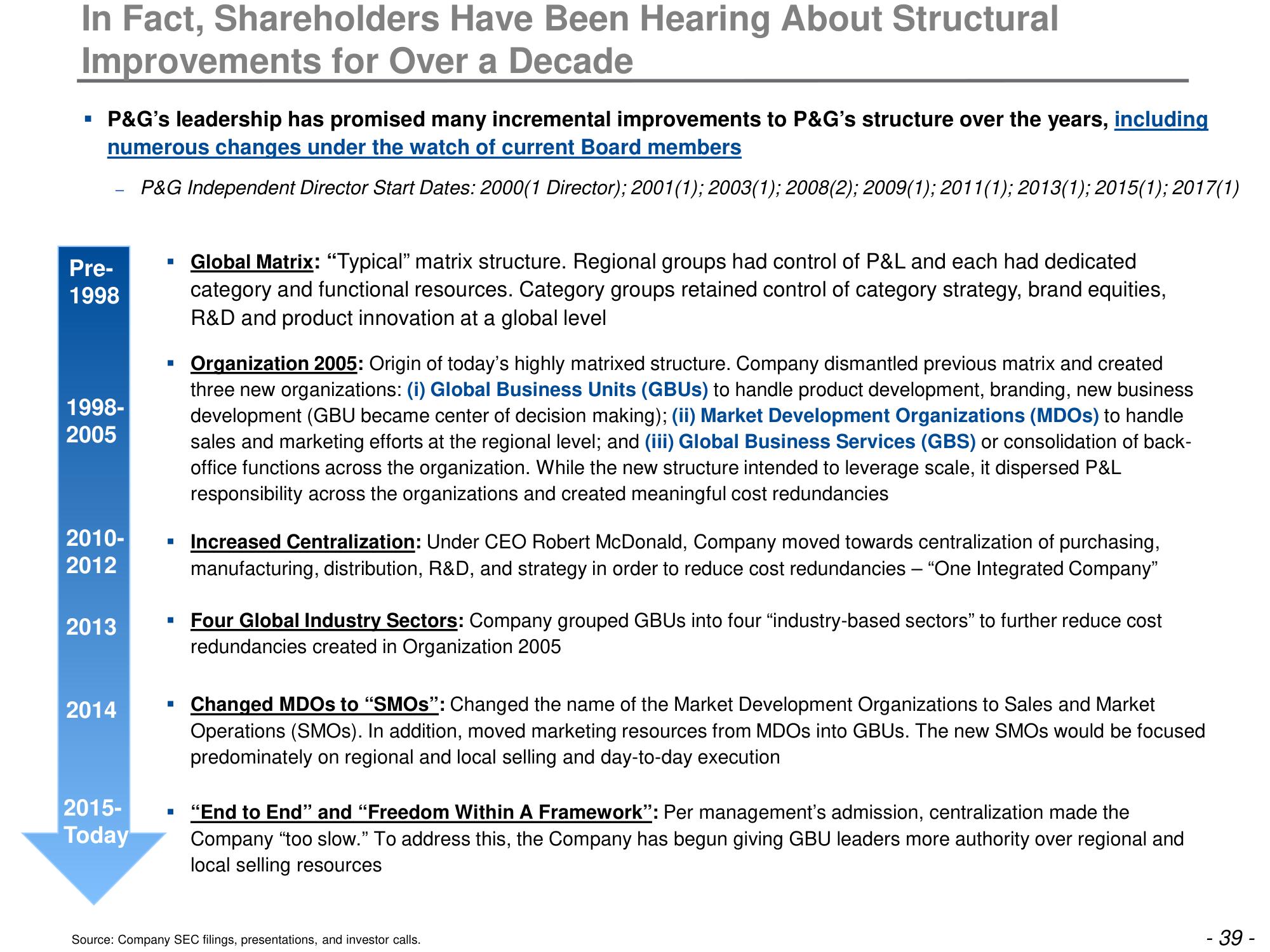Trian Partners Activist Presentation Deck
In Fact, Shareholders Have Been Hearing About Structural
Improvements for Over a Decade
▪ P&G's leadership has promised many incremental improvements to P&G's structure over the years, including
numerous changes under the watch of current Board members
P&G Independent Director Start Dates: 2000(1 Director); 2001(1); 2003(1); 2008(2); 2009(1); 2011(1); 2013(1); 2015(1); 2017(1)
Pre-
1998
1998-
2005
2010-
2012
2013
2014
2015-
Today
Global Matrix: "Typical" matrix structure. Regional groups had control of P&L and each had dedicated
category and functional resources. Category groups retained control of category strategy, brand equities,
R&D and product innovation at a global level
Organization 2005: Origin of today's highly matrixed structure. Company dismantled previous matrix and created
three new organizations: (i) Global Business Units (GBUS) to handle product development, branding, new business
development (GBU became center of decision making); (ii) Market Development Organizations (MDOs) to handle
sales and marketing efforts at the regional level; and (iii) Global Business Services (GBS) or consolidation of back-
office functions across the organization. While the new structure intended to leverage scale, it dispersed P&L
responsibility across the organizations and created meaningful cost redundancies
Increased Centralization: Under CEO Robert McDonald, Company moved towards centralization of purchasing,
manufacturing, distribution, R&D, and strategy in order to reduce cost redundancies - "One Integrated Company"
Four Global Industry Sectors: Company grouped GBUs into four "industry-based sectors" to further reduce cost
redundancies created in Organization 2005
Changed MDOs to "SMOS": Changed the name of the Market Development Organizations to Sales and Market
Operations (SMOs). In addition, moved marketing resources from MDOs into GBUS. The new SMOs would be focused
predominately on regional and local selling and day-to-day execution
▪ "End to End" and "Freedom Within A Framework": Per management's admission, centralization made the
Company "too slow." To address this, the Company has begun giving GBU leaders more authority over regional and
local selling resources
Source: Company SEC filings, presentations, and investor calls.
- 39 -View entire presentation